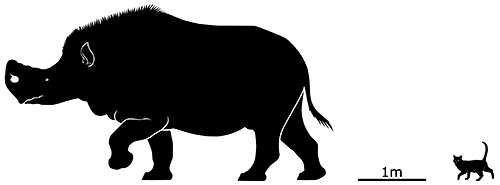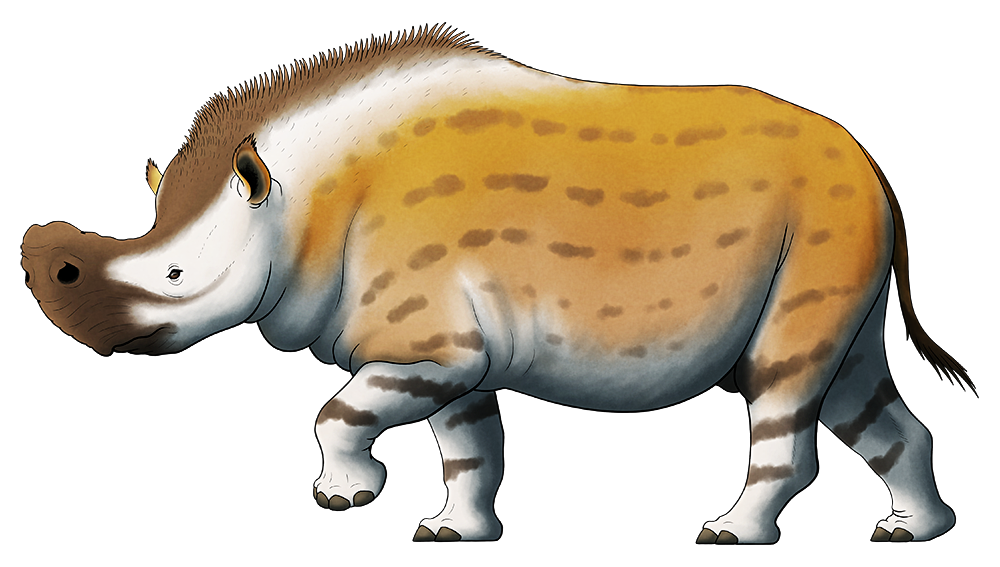The dinoceratans featured here a few days ago were some of the first large mammalian herbivores to evolve in the Cenozoic, but during the Eocene they were joined by another group: the even bigger brontotheres.
Part of the odd-toed ungulate lineage, brontotheres convergently resembled rhinos but were actually much more closely related to horses. And much like the dinoceratans they also had some unusual heads, with some species evolving concave foreheads and sexually dimorphic ossicone-like pairs of blunt horns on their noses.
But others went really weird.
Embolotherium andrewsi lived in Mongolia during the late Eocene, around 37-34 million years ago. Standing around 2.5m tall at the shoulder (8’2″), it was one of the largest brontotheres and also one of the oddest-looking.
It had a large bony “battering ram” at the front of its snout, formed from modified nasal bones – and while some reconstructions tend to shrinkwrap this structure as a horn, the fact that the nasal cavity appears to have extended all the way to its tip suggests that it was actually supporting a huge bulbous nose.
Since Embolotherium also doesn’t seem to have been sexually dimorphic like other brontotheres, its enormous ridiculous-looking snoot may instead have been a resonating chamber used for sound production and communication.


